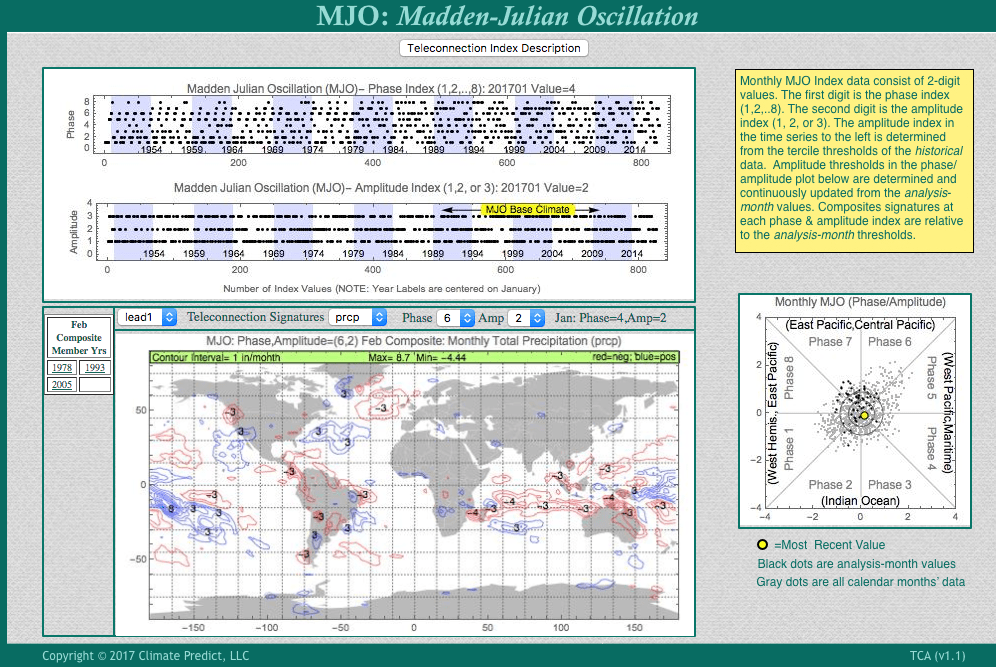KEY POINT—Last week in the $152-$154 area, we began increasing rain forecasts for Brazil coffee areas after a month of hot, dry weather. The teleconnections below show the correlations for wetter weather, as well as the MJO (below), which is a wetter phase for NE Brazil. The tight situation of Robusta, brought on by various weather problems around the world for more than a year, has also helped Arabica. There still may be some concerns about the Vietnam crop for Robusta, but improving rainfall for NE Brazil Robusta should be noted following our feeling 2 months ago of a potential major rally. The global supply situation remains a bullish consideration for Robusta coffee futures, trading in London. Though, if it was not for the upcoming improving weather situation in NE Brazil in February, our confidence would be a lot higher. Robusta coffee is the lower quality coffee that is made into instant coffee and grown mostly in Vietnam, Indonesia and NE Brazil. For Arabica coffee futures, trading on the ICE exchange and whose subsequent ETF (JO) can be traded by any stock trader, the bullish situation is not as clear as it has been. An off-cycle crop year and a rally in the Brazilian Real also have to be factored into the equation.
The improving South American situation has also pressured soybeans lately, per our suggestions more than 10 days ago to clients of an improving situation for both Argentina and Brazil– (-the 2nd and third largest exporters of soybeans in the world). Traders will pay close attention to forecasts the next 6 weeks in South American that will impact soybean trade and if there are any changes
Teleconnections (below), such as the warm Atlantic (+AMO) and warming off the coast of Peru (Nino 1+2), suggests the atmosphere is acting less like a La Nina. Though a bit hard to read, the graphic below of our exclusive long range weather forecast program for commodities, Climatech, illustrates the positive correlation (wet) for NE Brazil going into mid February
The MJO will be fairly strong from phase 5, then progressing to phase 7-8 the middle part of February.The average value for the next 2-3 weeks will be in phase 6. One can see, below the wetter phase (blue) for coffee areas of Brazil.




